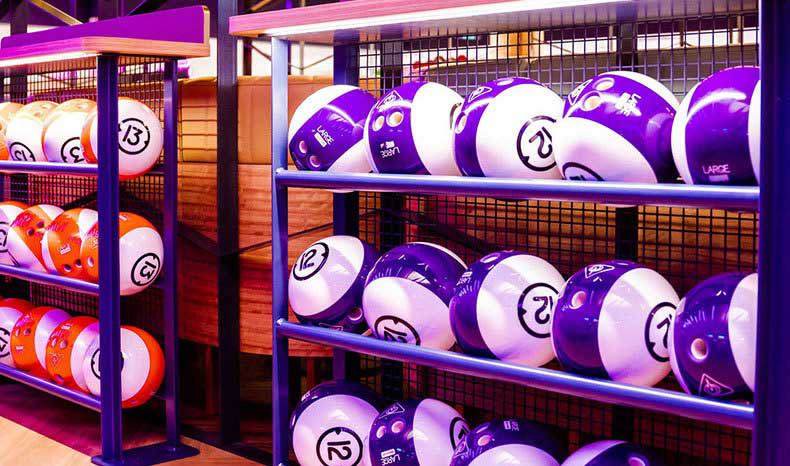The anatomy of a bowling ball
They’re big, they’re round, they’re heavy. They’re bowling balls: and yes, they’re available in all sorts of colours, too! Every time you go tenpin bowling, you probably spend some time before the game agonising over which bowling ball to use. Those racks of multi-coloured orbs certainly offer a lot of choice. Which weight ball should I use? Which shade will best reflect my personality? How should I hold a bowling ball?
If you’ve ever wondered what tenpin bowling balls are made of and how they’re created, we have the answers.
In the beginning
Tenpin bowling has been around for thousands of years – archaeologists have even found early ‘bowling pins’ in the grave of an Egyptian child buried 5,200 years ago! For centuries, various civilisations have created their own unique versions of tenpin bowling. Through the ages, tenpin bowling balls were made from a range of different materials at different times, including:
- Pre-1900s: Most bowling balls were made from a durable wood called Lignum vitae.
- 1905: The first rubber band ball, called Evertrue, was made.
- 1915: Brunswick Corporation creates the Mineralite rubber ball.
- 1970: The first polyester ball is made.
- 1980s: Urethane balls join the fray.
- 1990s: Hi there, resin balls!
(Let’s not forget The Flintstones: Fred Flintstone and Barney Rubble spent loads of time at Bedrock Bowling around 10,000 B.C., where the bowling balls were made from solid rock. Legends.)
The materials of modern-day bowling balls
Nowadays, bowling balls are made from a combination of materials, and each individual ball may have a different combination depending on its manufacturer.
The main components of a bowling ball are plastic (or polyester), urethane, and reactive resin. Plastic (polyester) balls are basically the worker bees of tenpin bowling: they’re very durable and inexpensive, making them the most common types of balls found in bowling alleys.
The materials used in a bowling ball can have a huge impact on things like durability, texture, and the bowler’s performance. For example: plastic (or polyester) balls produce the smallest amount of hook on the back third of the lane (which surface has less oil and offers more friction) because they are relatively unbothered by varying amounts of oil on the bowling lane, while urethane (resin) balls provide the greatest hooking ability and deliver more power to the pins on impact. They bring the curves! This is why many serious tenpin bowlers opt to buy their own customised bowling ball: kind of like picking out a fancy tuxedo for a date with the pins.
What’s inside a bowling ball?
Imagine Earth’s many layers, with a core right at its centre: a bowling ball is very much the same. Tenpin bowling balls have a couple of layers, including the coverstock, which is the outermost casing of the ball, and makes its ‘fashion statement’: colour, patterns, logos, you name it.
Inside the ball itself you’ll find a core, which can be made in different shapes, sizes, and materials to weigh the ball down sufficiently. This core works to make up for some of the weight lost when drilling the grip holes in the ball, and its composition can affect a variety of factors such as the bowling ball’s centre of gravity and trajectory down the lane.
Next time you head out to your local Zone Bowling for a game of tenpin bowling, don’t judge a bowling ball by its colour: there’s a lot more going on under the surface of these iconic beauties! And now you have some interesting trivia to share with your mates when next you meet at Zone Bowling for a birthday, hangout or corporate party. Ready to roll? We’ll see you there!







